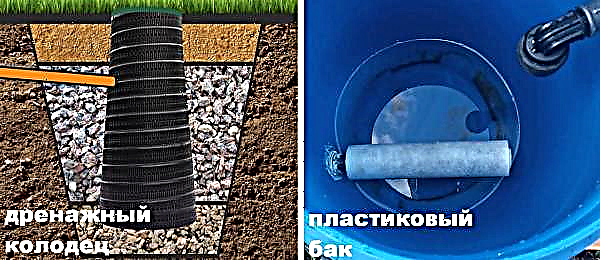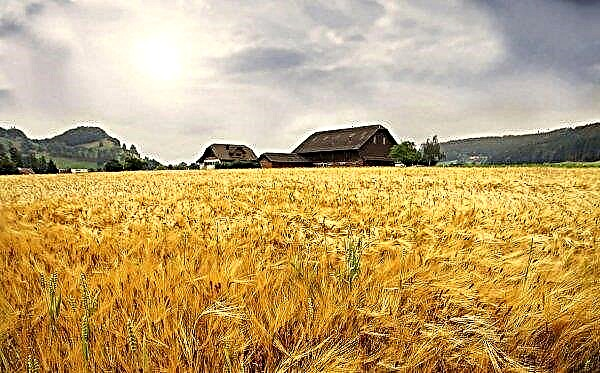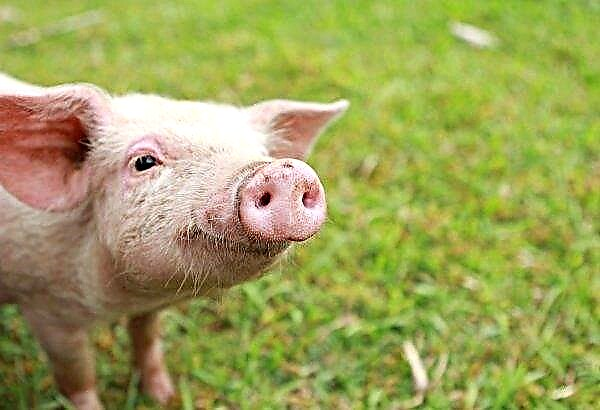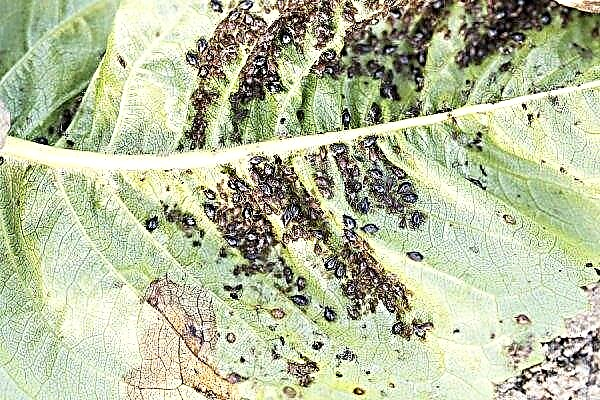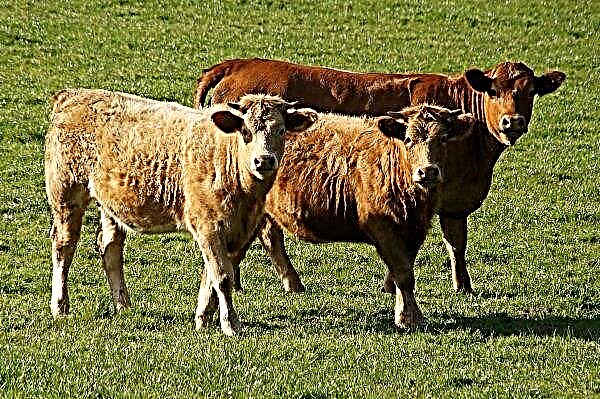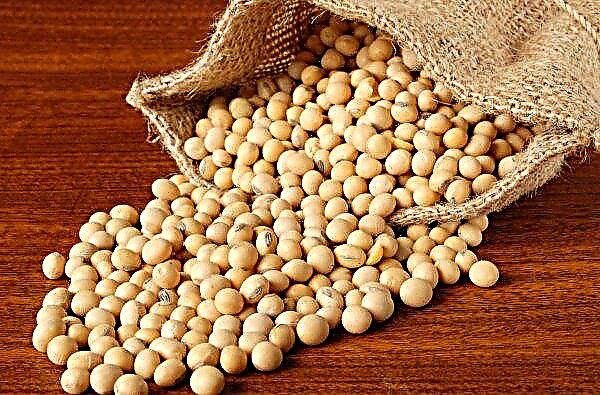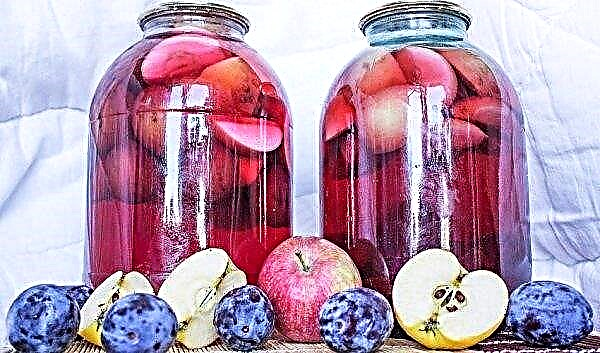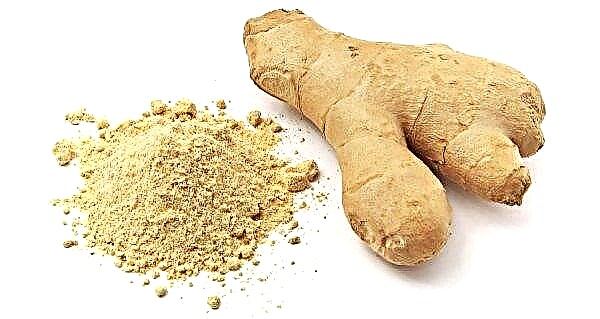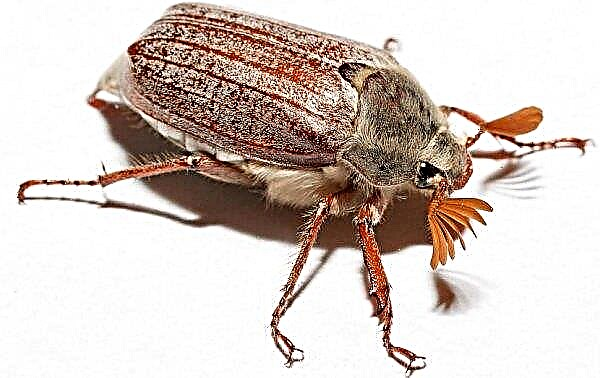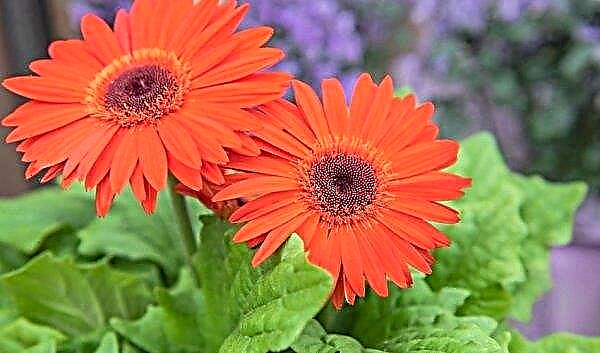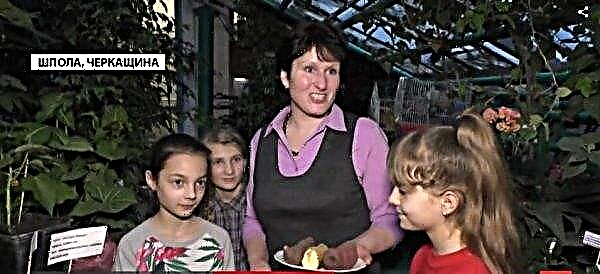Panicled hydrangea is adapted to the Russian climate; it tolerates frosts and humidity, and temperature changes well. One of the varieties demanded by gardeners is Royal Flower. We’ll talk about him today.
Description of appearance
Royal Flower has a long flowering and unusual color of petals. The plant has a pleasant aroma and is a honey plant. It is not difficult to grow, there are no special requirements for care. Culture is used in various methods of landscape design. It is not aggressive towards other plants, goes well with conifers, ornamental cereals, flowers and ferns.
Did you know? Hydrangea — one of the few plants that absorbs from the soil and accumulates aluminum. This property explains the blue color of the petals of some varieties.
Bush
Hydrangea paniculata (scientific name) is a low shrub with a superficial, well-developed root system. The maximum growth is 110 cm, the crown diameter is 85 cm. The shoots of the plant diverge from the base, giving the bush a rounded shape. The branches are flexible, but strong, which is necessary to carry large inflorescences. The bush grows rapidly, so it needs annual pruning.

Leaves
Shoots are densely covered with foliage. The color of the leaf plates is saturated green. The shape is ovoid with a pointed end. The plate is streaked with veins, the central vein is especially clearly visible. Sheet size - 12 cm, width - 4-5 cm. Plates are not pubescent.
Inflorescences
Inflorescences are large, densely packed with panicles. The panicle brush is 25-30 cm long and 15 cm in diameter. Two types of flowers form it: fruit-bearing small, up to 1 cm in circumference, and barren large, up to 2.5 cm. In the first, the seeds are laid, with the help of which the propagation of the variety is carried out. At the end of flowering, a box is formed up to 3 mm in length with small planting material of a dark color. The second type of flowers has a decorative function, giving inflorescences splendor.
Characteristics and features of growth
When growing hydrangeas, you need to choose the right place. Ideal conditions for lush flowering - a well-lit or slightly shaded area, protected from the wind. Since the bushes have a superficial root system, a strong rush can tear a young specimen out of the soil.
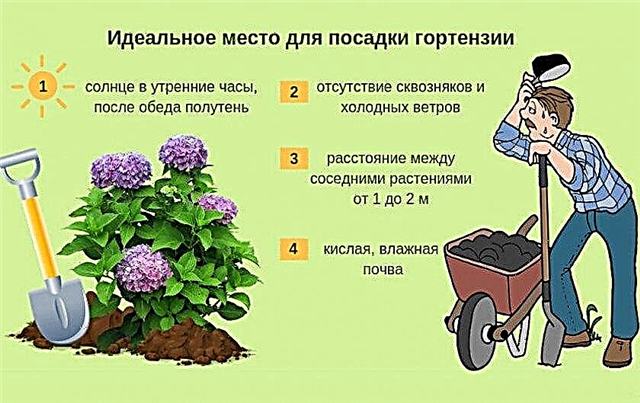
Royal Flower cultivars well in drained, loose, nutritious and moist soils, acidic or slightly acidic. The plant is responsive to organics and mineral compounds. They feed the bush up to 4 times per season. The culture loves abundant watering, the soil should always be moistened 10-12 cm deep.
Important! Wood ash, “fluff”, dolomite flour as hydrangea fertilizers are contraindicated: they deoxidize the soil, which is undesirable for this plant.
Every year, the bush needs pruning: sanitary and formative. The plant is characterized by rapid growth, and so that the shape of the bush does not become chaotic, shoots that are knocked out of the contours of the crown are shortened. Every 3-4 years, hydrangea needs to be rejuvenated by cutting off the old lignified shoots on the ring.

In culture, panicled hydrangea first blooms in the 3rd year after planting. Inflorescences are formed on young shoots of the current year. At the beginning of the period, the petals are creamy white, then gradually turn pink, acquiring a bright crimson hue at the end. Flowering lasts from June to October.

The winter-hardy variety tolerates sub-zero temperatures up to -29 ° С. In the northern regions with a particularly harsh winter, the proximity of the roots to the surface requires shelter.
A thick, up to 25 cm, layer of mulch from a natural material: straw or wood bark is placed in the trunk circle. The hydrangea description refers to resistance to diseases and insect attacks.
Most often, growing problems arise due to gardener errors:
- excessive or insufficient watering;
- lack of nutrients;
- a place too open to the sun (burns of leaves);
- heavy soil that does not allow moisture and air to pass through.
Important! Preferably every 3–4 years to transplant the bush to a new place. Hydrangea depletes the earth and begins to hurt without transplantation.
Royal Flower hydrangea variety will decorate any corner of the garden, perfectly adjacent to other cultures. The main task of the gardener is to provide the plant with conditions that are comfortable for development.

